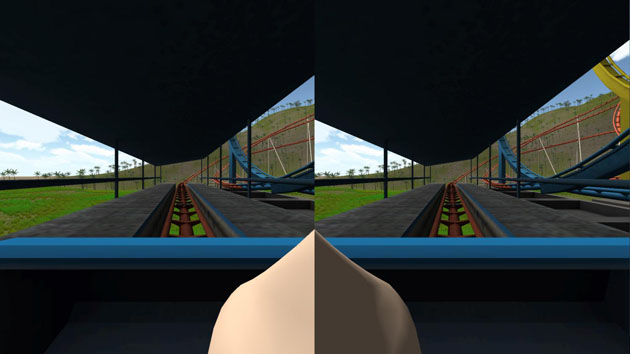
Featured Blog | This community-written post highlights the best of what the game industry has to offer. Read more like it on the Game Developer Blogs or learn how to Submit Your Own Blog Post
Body Parts and Motion Sickness in VR
An investigation into some of the causes of motion sickness when using VR technology previously revealed that simulating a nose can mitigate some of the unpleasantness associated with this phenomenon. Turns out, legs can have a similar effect!

 This is a report on research my student, Dylan Poljak, and I did at Penn State Behrend in the game development program, I hope you'll check that program out, and also check out Dylan's portfolio.
This is a report on research my student, Dylan Poljak, and I did at Penn State Behrend in the game development program, I hope you'll check that program out, and also check out Dylan's portfolio.
Simulator sickness, a form of motion sickness, is a sort of no-fun phenomenon in which individuals using a simulation or VR device, like an Oculus Rift, get sick in a variety of unpleasant and often chunky ways. Some of the symptoms include nausea, vomiting, dizziness, lightheadedness, headaches, fainting, existential ennui, and more. Needless to say, these kind of hangoveresque phenomena keep people from playing games, using simulations, and so on. For this reason, my student Dylan Poljak and I were very interested in looking for a computationally inexpensive solution to what has become a pervasive problem.
There are myriad theories regarding the underlying cause of motion sickness, some of which involve the eyes and a triggering of the vagus nerve, and in fact many of the symptoms of vasovagal syncope (e.g. fainting) are very similar to those felt in simulation sickness - although the syncope symptoms usually do not indicate that precipitous vomiting is imminent.
 Source: Engadget
Source: Engadget
Previous studies found that adding a virtual nose to a simulator significantly reduced simulator/motion sickness in individuals. The study reported that individuals were able to maintain play without simulation sickness symptoms longer in a situation in which a simple nose was placed in front of the players' faces while they used both the Tuscany Demo packaged with the Oculus Rift, and a simulated rollercoaster. This got us thinking - if a nose in the simulator significantly reduced player perceptions of sickness - what might other body parts do?
After fumbling with other body parts - spleens, sphincters, and the like - we begrudgingly settled on legs. In true Half-Life fashion - there's just always been something odd about looking down and not seeing my own legs.
 My God, isn't it gorgeous?
My God, isn't it gorgeous?
Our study used an ex-post-facto design, during which the simulator sickness questionnaire, a peer-reviewed questionnaire evaluating the presence of sickness was administered.
We created a relatively simple "find the object" game in Unity - hey, we weren't trying to win the IGF for best design here, we were trying to test whether or not our game was bad enough to make people spew. About 35 people were subjected to about 10 minutes in this game, randomly sorted to either have, or not have legs. Initial results also showed a significant decline in motion sickness. Best of all, these results seem to persist in retests, although more testing is needed - (e.g. the results are replicable). Standard academic posturing about small sample sizes aside, these results are promising considering the extremely low computational cost of adding legs to an actor.

For those of you who are data nerds, having versus not having an animated body (legs) in the simulation was correlated with a reduction in motion sickness with a pearson correlation of -.306, with a p-value of .074 (yes I'm aware that's not quite 0.05, but 92.6% confidence is good enough for me in a first-pass test). The test used an Oculus Rift DK2, and we'd love to get the chance to try it again with the consumer model.
More kinds of research into simple fixes like this is needed to make sure everyone can enjoy virtual reality gaming, free of Dramamine. I invite you to give this a try in your games and tell me how it works out!
Read more about:
Featured BlogsAbout the Author(s)
You May Also Like







.jpeg?width=700&auto=webp&quality=80&disable=upscale)








